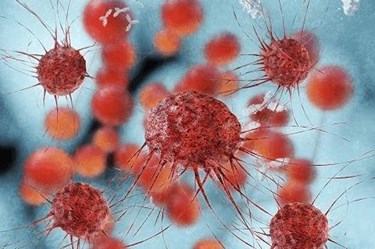BMS' Opdivo Trials: What They Teach Us About Successful Studies

By Ed Miseta, Chief Editor, Clinical Leader

Lately, it’s hard to ignore the news around immunotherapies to treat cancer. Opdivo (nivolumab) is a Bristol-Myers Squibb (BMS) medicine that has been approved by the FDA for patients with previously treated advanced non-small cell lung cancer (NSCLC), metastatic melanoma, and renal cell carcinoma. While the medicine is a welcome treatment for cancer sufferers, it might also be a textbook lesson for sponsor companies on how to conduct a successful clinical trial.
“I think that our string of early successes with the first five randomized trials were instrumental to the success we had with later trials,” says Jean Viallet, global clinical research lead, oncology for BMS. “I certainly think it speaks to the power and ubiquity of the mechanism of action of this molecule. It unleashes an activated immune system, which for years has been dreamed about by the forefathers of immunotherapy. If we have the ability to manipulate the immune system, we have the potential to see improved outcomes across multiple indications.”
In January 2016, BMS announced a randomized Phase 3 study evaluating Opdivo was stopped early because an assessment by the Data Monitoring Committee (DMC) concluded the study had met its primary endpoint. The DMC, a team of independent outside clinical researchers and biostatisticians working with an independent statistical clinical research organization, is contracted by BMS to review the safety and any interim analyses of a drug. The DMC determined patients receiving Opdivo demonstrated superior overall survival when compared to the control arm.
 According to Viallet, the seeds for that success were planted early on. The team at BMS developed a thorough clinical plan approximately four years ago and was excited to see the results of that lengthy planning process come to fruition. “It can take several years to plan, enroll, conduct, and analyze a trial,” he says. “The trial successes we had with Opdivo shows the team made a series of correct decisions.”
According to Viallet, the seeds for that success were planted early on. The team at BMS developed a thorough clinical plan approximately four years ago and was excited to see the results of that lengthy planning process come to fruition. “It can take several years to plan, enroll, conduct, and analyze a trial,” he says. “The trial successes we had with Opdivo shows the team made a series of correct decisions.”
Viallet cites several of those decisions made by the Opdivo team. “They selected the right dose to move forward in Phase 3 trials,” he says. “They selected the right schedule of administration to move forward in the trials. We also allowed everyone to participate. The team was able to show the correct biomarker strategy, allowing enrollment of patients while gathering information and performing subsequent subset analyses to better understand the interactions between the PD-L1 biomarker and the special populations of the treatment.”
Comparing Biological Features
Early on in the study, team members focused on the potentially high likelihood of success of using Opdivo to treat renal cell carcinoma and melanoma. According to Viallet, there’s no mystery why the team pursued this indication: It has been recognized for quite some time to be immunogenic and potentially sensitive to immune manipulation, so it made patients with renal cell carcinoma appropriate for immunotherapy. The team also took a leap of faith to study NSCLC, a disease which was not recognized as being immunoresponsive. Based on early responses in lung cancer patients, definitive randomized studies were conducted and proved positive for survival.
“By adjacency, squamous cell carcinoma of the lung shares many of the same biological features as squamous cell carcinoma of the head and neck,” states Viallet. “They are not identical, but there’s enough overlap that by adjacency our teams thought that head and neck carcinoma could be treated with immunotherapy as well.”
In terms of methodology, the approach used in the design of the trial would not be unfamiliar to most readers. To demonstrate the potential for survival improvement in oncology, sponsors hope to be able to demonstrate at least a 20 percent relative improvement. Anything less than that is of marginal impact to treating physicians and certain payers and makes it difficult to introduce new products from a regulatory, clinical, and reimbursement perspective.
“For that reason, sponsors will design their trials in terms of the number of patients and number of events that will need to be observed (before the trial is analyzed) to look for at least a 20 percent reduction,” says Viallet. “We have always been more optimistic than that and have designed our trials to be able to detect a somewhat larger treatment effect. Not anything extraordinary, but something that would be of immediate and unarguable interest to all of the stakeholders and most importantly to the patient.”
Become A Believer In Your Study
Viallet notes he and his colleagues are true believers in this approach to treating cancer. The team never gave up hope that the true treatment effect might prove to be even greater than the trial was designed to demonstrate. As a result, Phase 3 protocols commonly include the provision for a preplanned interim analysis. That analysis is meant to act as an early warning if, in fact, the treatment effect would be greater than what the team had hoped for. If that were to happen, the result would be known sooner and could initiate the process of regulatory review, making the findings available to patients and their physicians sooner.
“This is done a very rigorous way,” he says. “It’s preplanned, using the statistical analysis plan of the protocol. Reviews are conducted by an independent DMC that operates under a predesigned detailed charter. The protocol and the statistical analysis plan are submitted with the IND application, allowing the FDA an opportunity to review and comment. This is done in full transparency and with rigorous methodology. If and when the efficacy results observed at that time are greater than the minimum threshold that has been predesigned, the DMC will declare that the study has met its goals and release the data to BMS for our own review and action.”
At that time, BMS will share the information with the FDA and engage in a dialog on how to best approach the planning of the submission. This is done to facilitate the review of the data and hopefully lead to an early approval, giving patients access to the treatment as quickly as possible.
Oncology Research Has Come A Long Way
You might be thinking that it is not common for a pharma company to end an oncology trial early because of the effectiveness of the treatment. And you would probably be right, especially thinking back on the era of chemotherapies. But Viallet notes cancer treatments have entered a new era, and the entrance of checkpoint inhibitors and immuno-oncology approaches are redefining the treatment landscape for patients and rewriting the book on the potential of outcomes from randomized clinical trials.
“Everyone involved in this field must evolve their frame of reference to the potential of this new approach and all of the lessons that it’s teaching us,” says Viallet. “We cannot try to force the development of immuno-oncology treatments into a framework of cytotoxic chemotherapy. This is a different way to treat cancer and it leads to a different dynamic in terms of the clinical trial result.”
There have been over 20 Phase 3 trials initiated for Opdivo. Viallet notes some are fully enrolled but not yet analyzed, while others are just now starting. The research on the drug continues to evolve. Of the more than 20 trials initiated thus far, 5 have been stopped early for effectiveness. Takeaways from earlier trials have certainly helped BMS make later trials more effective.
“In order to extend the benefits of nivolumab to as many patients as possible, we are now conducting studies in parallel,” notes Viallet. “We have entered into a very broad program, looking at 20 to 25 different tumor types. We are also continuing to try to improve outcomes for patients combining Opdivo with Yervoy, a combination that has received its first approval in the treatment of melanoma. This combination approach will extend the benefits of immuno-oncology to more patients and is already being looked at for other indications, including renal cell carcinoma and non-small cell lung cancer.”
But the research doesn’t stop there. BMS has a rich pipeline of other mechanisms of action that involve manipulation of the immune system. These mechanisms will also be combined with Opdivo and other agents in the hopes of finding favorable treatments for more patients. “We’re continuously learning how to do this better and taking advantage of our pioneer status in the field of immuno-oncology,” adds Viallet.
